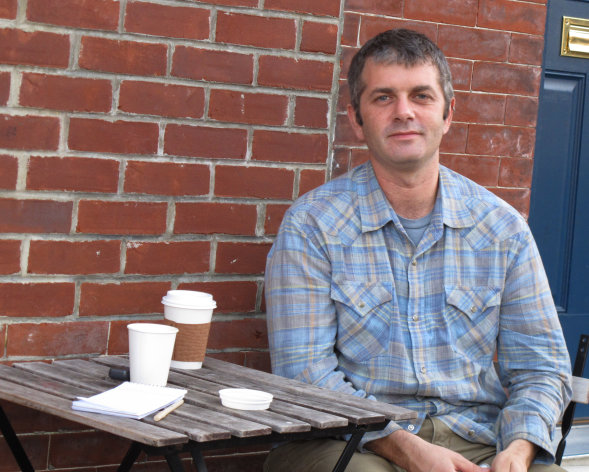Superstorm moves film from theoretical to concrete — In the documentary "Shored Up," scientists warn that with a rising sea level, a major storm could put New Jersey's barrier islands underwater and create devastating storm surges. In other words, what happened last month when Superstorm Sandy slammed into New Jersey and New York.
For Ben Kalina, the Philadelphia filmmaker who was nearly finished putting together the documentary when the storm hit, it meant that the ideas in the film that may have sounded far-fetched — or at least, discussions of something that may happen sometime in the future — were suddenly immediate.

Associated Press/Geoff Mulvihill - Filmmaker Ben Kalina poses for a
portrait in Philadelphia on Monday, Nov. 12, 2012. Kalina is finishing a
film about the vulnerability of barrier islands. (AP Photo/Geoff
"Until Sandy, we were making a film about something much more meditative, really," Kalina said. "And now the stakes are suddenly much more real."
It also meant Kalina and his crew had more shooting to do, revisiting places they'd shot — some of which were wiped away by Sandy.
That again pushed back the completion date for a film he'd been working on for three years. He's now planning to finish the film in January. It's an independent effort that he is hoping will be shown on television. He is also planning to hold screenings, particularly in the places featured in the movie, such as New Jersey's Long Beach Island.
Kalina, 36, is not a scientist, but he's fascinated by telling the stories from science by looking at the cultural and political implications, too. He worked on "A Sea Change," about the state of the world's oceans, and "After the Cap," a look back at the Gulf oil spill of 2010, among other films.
He became interested in the state of barrier islands after reading an article about how surfers opposed beach replenishment projects on the New Jersey shore.
The story became broader than that, evolving into a look at the way shore areas are developed and protected through means like jetties and beach replenishment projects. As more structures are built on barrier islands, he said, more has to be done to protect them. "Once you decide to settle in a place that's so fraught, all the decisions you make have consequences and more consequences," he said.
The solutions can be expensive, and Kalina says, not sustainable.
"Beach replenishment is not going to save the day," he said. "You get this sense of security from beach replenishment that's a false sense of security in the long run."
The film uses animation, interviews with scientists, footage of storms past and some dramatic policy debates to tell the story.
Kalina started out focusing on New Jersey's Long Beach Island, but also traveled to North Carolina. There, officials decided this year to use historical trends to build their expectations for oceanside building codes and land-use decisions rather than the more rapid sea-level rise that many scientists now expect.
The filmmaker, who grew up going to family homes on Martha's Vineyard, said the ideal time to address these how best to develop vulnerable coastlines would be before a major storm, not after one.
The irony is that nothing can draw attention to the issue like a storm.
"It's a window of time when people have actually just witnessed the destructive force of nature," he said. "There are very few windows like that."
And it could also be a window for his movie.
Before the storm, when he talked about it in his neighborhood in South Philadelphia, Kalina said, he found himself explaining what a barrier island is.
Now, practically everyone knows. ( Associated Press )
No comments:
Post a Comment